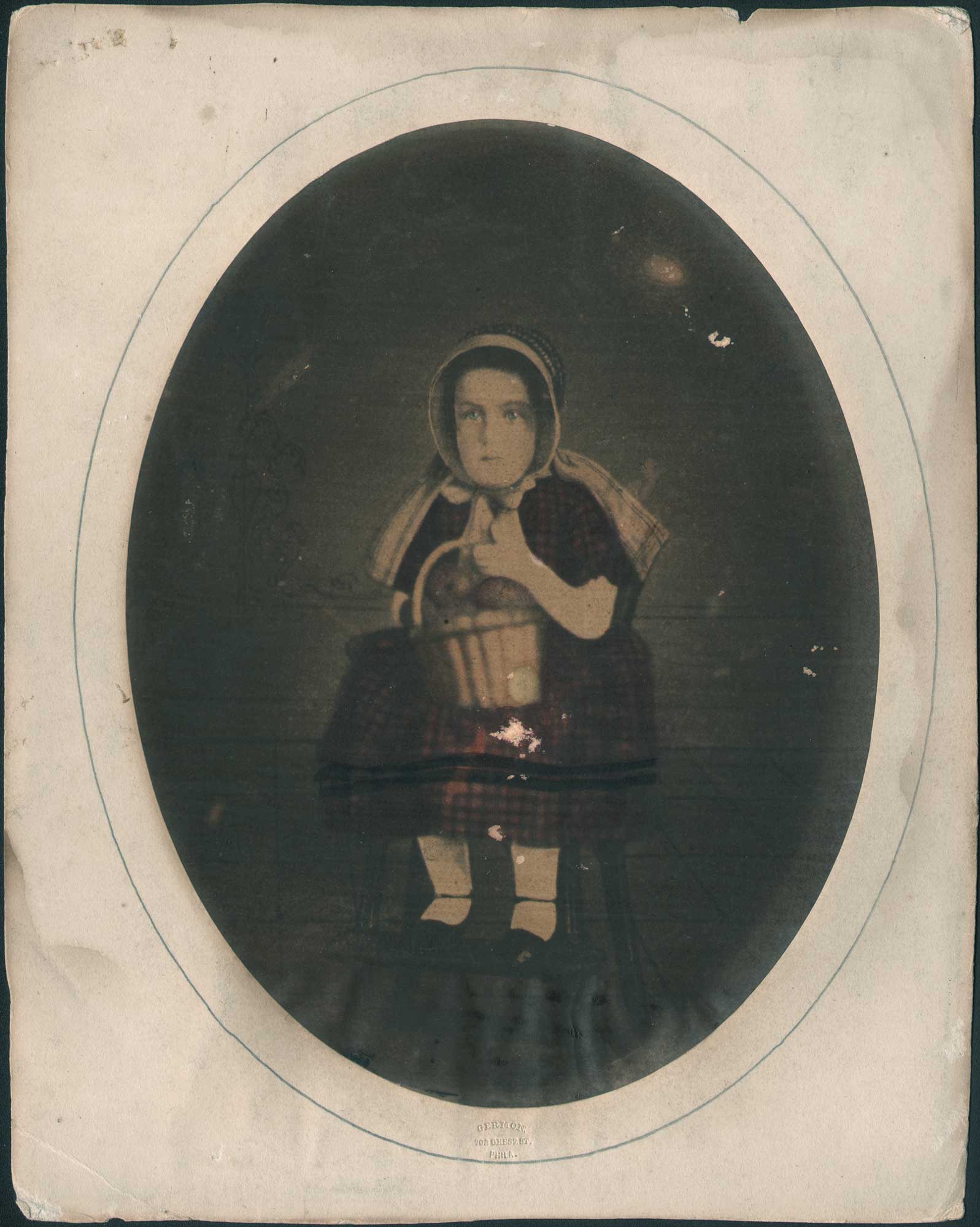
Girl with Basket of Apples
This fascinating photographic “painting” depicts a child sitting on a high chair holding a basket of apples. The facial features however suggests the likeness of a young woman, and the overall effect evokes a folk art painting that has combined with a photograph. The folk tale character Little Red Riding Hood comes to mind, although our subject wears a red plaid dress and bonnet instead of a red cape in the European folk tale. On close inspection, it would appear the child’s head is from a photograph, and most if not all of her clothes, legs, feet and basket containing apples have been painted in. The image is believed to date ca. 1858-1860, with 1858 being the first year the artist moved his studio to 702 Chestnut St. in Philadelphia.
Could this also be a type of mourning photograph?
During the American Civil War era of 1860-65, Germon produced cdv’s of soldiers and even an 1865 mourning photo copy of an 1861 portrait of Abraham Lincoln.
For comparison, a large family mourning portrait collaboration between W.L. Germon and American artist W. Cherry from the same period titled Family Portrait can be seen at the MET in New York.
✻ ✻ ✻ ✻ ✻
Washington Lafayette Germon: 1821-1877
In the early 1840s, Germon apprenticed as a steel engraver in Philadelphia. He learned the daguerreotype process and then in 1846, formed a partnership with James Earle McClees called “McClees & Germon”. The Philadelphia firm operated until 1855, when a fire destroyed their studio on March 15, 1855.
1846-1855: Studio address: 160 Chestnut Street, Philadelphia: McClees & Germon Daguerreotype Rooms.
1855-1857: Studio address: 168 Chestnut, Philadelphia: Now working by himself, he’s listed in McElroy’s Philadelphia City Directory these years as “artist” and under heading “Daguerreotype Miniatures.” A surviving business card from this era: W. L. GERMON, PHOTOGRAPHIST, S. W. Cor. Chestnut and Seventh Sts., Second Floor, Entrance 168 Chestnut St., three doors above Seventh.
1858-1864: Studio address: 702 Chestnut Street., Philadelphia: The business operated as “W.L. GERMON’S Daguerreotype & Photograph Rooms” as well as, or later: “The Photographic Gallery of W.L. GERMON”. (McElroy’s Philadelphia City Directory)
1864-1871: Studio address: 914 Arch Street., Philadelphia: Germon opens his “Temple of Art”. Notice: The Philadelphia Press, Oct. 5, 1864: “W. L. Germon having removed from 702 Chestnut Street to 914 Arch Street will open is Temple of Art the largest and most Complete photographic establishment in the country…” Some surviving photographs are signed with his middle name: Lafayette, during this period.
Timeline sources: The History of Photography Archive, The Library Company of Philadelphia, Heritage Auctions: websites. (2025)